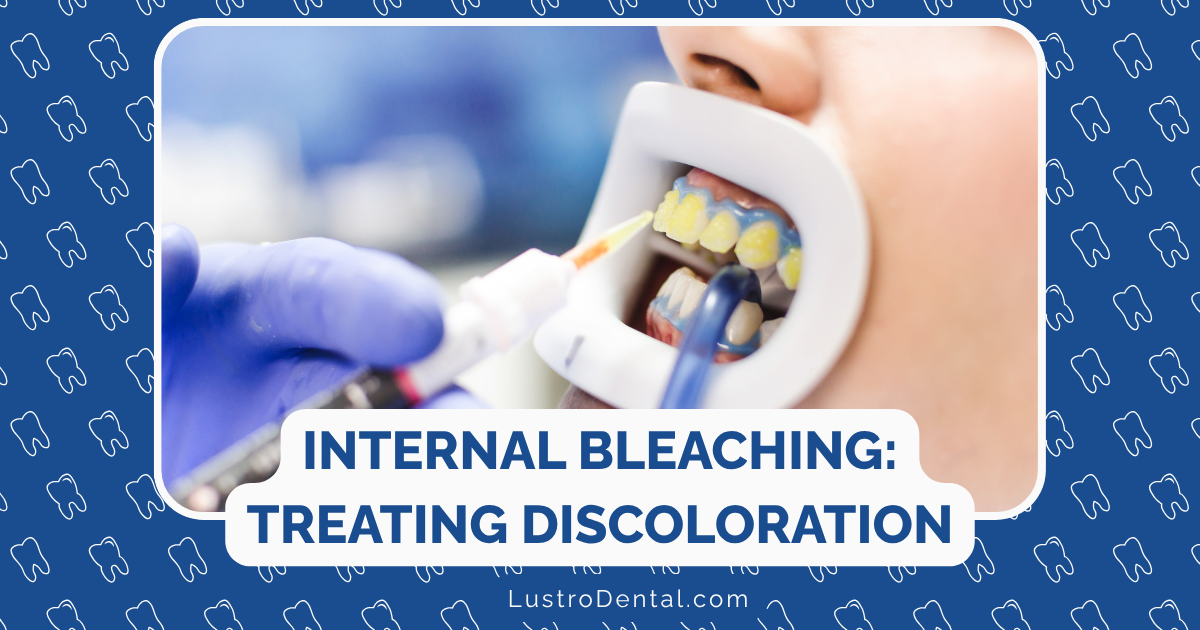Pulpotomy vs. Pulpectomy: Understanding Treatment Options for Your Child

As a parent, hearing that your child needs a dental procedure beyond a simple filling can be overwhelming. Terms like “pulpotomy” and “pulpectomy” might sound intimidating, especially when they’re described as “baby root canals.” But understanding these procedures—their differences, when each is appropriate, and what to expect—can help ease your concerns and prepare both you and your child for a positive experience.
The Living Heart of the Tooth: Understanding Dental Pulp
Before we compare these treatments, let’s understand what they’re designed to address. Inside each tooth is a soft tissue called the dental pulp, which contains:
- Blood vessels that nourish the tooth
- Nerves that provide sensation
- Cells that produce dentin (the layer beneath the enamel)
- Immune cells that help fight infection
In primary (baby) teeth, the pulp is proportionally larger and extends closer to the tooth surface than in permanent teeth. This means decay can reach the pulp more quickly, often before obvious symptoms appear.
When bacteria from decay or trauma reach the pulp, inflammation occurs. Depending on the extent of this inflammation, different treatment approaches may be needed to save the tooth.
Pulpotomy: The Partial Solution
What Is a Pulpotomy?
A pulpotomy is often called a “partial baby root canal” because it involves removing only the infected portion of the pulp in the crown (top) of the tooth while leaving the healthy pulp in the roots intact.
Dr. Sarah Johnson, a board-certified pediatric dentist at Children’s Dental Health Institute, explains: “Think of a pulpotomy as selective removal. We’re preserving the vital, healthy tissue in the roots while eliminating the infected portion in the crown.”
When Is a Pulpotomy Appropriate?
According to the American Academy of Pediatric Dentistry, a pulpotomy is indicated when:
- The decay or trauma has reached the pulp, causing exposure
- The inflammation is limited to the coronal (crown) pulp
- The tooth is still vital (alive) with healthy root pulp
- There is no evidence of abscess or extensive infection
- The tooth is restorable with a crown or similar restoration
Interestingly, recent research from a 2024 clinical trial suggests that pulpotomies may be appropriate even in cases of symptomatic irreversible pulpitis (significant inflammation) that traditionally would have received pulpectomies. This study found comparable or even superior outcomes with the less invasive pulpotomy procedure.
The Pulpotomy Procedure: What to Expect
- Preparation: Your child will receive local anesthesia to ensure comfort. For anxious children, additional sedation options may be discussed.
- Decay Removal: The dentist removes all decay from the tooth.
- Pulp Chamber Access: The top portion of the pulp chamber is accessed.
- Coronal Pulp Removal: Only the infected pulp in the crown is removed, while the healthy root pulp remains.
- Medicament Application: A biocompatible material is placed over the remaining pulp. Modern materials include:
- Mineral Trioxide Aggregate (MTA)
- Biodentine
- NeoMTA Plus
- iRoot BP Plus
- These materials have largely replaced traditional formocresol due to their excellent biocompatibility and healing properties.
- Restoration: The tooth is typically restored with a stainless steel crown or similar restoration to protect it from fracture.
Pulpectomy: The Complete Approach
What Is a Pulpectomy?
A pulpectomy is a more extensive procedure that involves removing the entire pulp tissue from both the crown and roots of the tooth. It’s more similar to a traditional root canal in permanent teeth.
When Is a Pulpectomy Appropriate?
A pulpectomy is typically indicated when:
- The infection has spread throughout the pulp, including the root canals
- There is irreversible inflammation of the entire pulp
- There are signs of abscess or extensive infection
- The tooth shows symptoms of pulp necrosis (death)
- There is evidence of infection in the surrounding bone
The Pulpectomy Procedure: What to Expect
- Preparation: Similar to a pulpotomy, your child will receive appropriate anesthesia.
- Decay Removal: All decay is removed from the tooth.
- Complete Pulp Access: The entire pulp chamber is accessed.
- Total Pulp Removal: All pulp tissue is removed from both the crown and root canals.
- Canal Cleaning and Shaping: The canals are cleaned and shaped using specialized instruments. Recent advances include pediatric-specific rotary files like the Kedo system, designed for the unique anatomy of primary teeth.
- Canal Filling: The canals are filled with a resorbable material that will disappear as the primary tooth’s roots naturally resorb. Common materials include:
- Zinc oxide eugenol
- Iodoform-based pastes (like Vitapex or Metapex)
- Calcium hydroxide-containing pastes
- Endoflas (a combination material)
- Final Restoration: Like with a pulpotomy, the tooth is typically restored with a crown.
Comparing Success Rates: What the Research Shows
Parents naturally want to know which procedure has better outcomes. Recent research provides some interesting insights:
- A 2024 retrospective study comparing iRoot BP Plus pulpotomy to Vitapex pulpectomy found significantly higher success rates for pulpotomy. At 48 months, clinical success rates were 77% for pulpotomy versus 53.1% for pulpectomy.
- Another recent clinical trial comparing formocresol pulpotomy to zinc oxide-eugenol pulpectomy in primary incisors found comparable success rates at 12 months: 90.6% clinical success for pulpotomy versus 87.5% for pulpectomy.
- A study in Nature Scientific Reports found that newer materials like NeoMTA Plus showed excellent success rates for pulpotomy, with 100% clinical success and 96.9% radiographic success at 12 months.
These findings suggest that with modern materials and techniques, both procedures can be highly successful, with pulpotomy potentially offering advantages in terms of long-term outcomes and being less invasive.
Making the Right Choice: How Dentists Decide
Dr. Michael Chen, pediatric dental researcher, explains the decision-making process: “We consider multiple factors when recommending either a pulpotomy or pulpectomy. The extent of infection, the child’s symptoms, the restorability of the tooth, and even the child’s ability to cooperate all play important roles.”
Key factors in the decision include:
- Pulp Status: Is the inflammation reversible or irreversible? Is it limited to the crown or extends to the roots?
- Symptoms: Is there spontaneous pain, swelling, or evidence of abscess?
- Radiographic Findings: Do X-rays show infection around the roots or in the bone?
- Tooth Type and Condition: Is the tooth restorable? How long until it will naturally exfoliate?
- Child Factors: Age, cooperation level, and overall health status.
Latest Advances: What’s New in Pediatric Pulp Therapy
The field of pediatric pulp therapy continues to evolve, with several exciting developments:
1. Bioactive Materials
Newer materials like MTA, Biodentine, and NeoMTA Plus are revolutionizing outcomes by:
- Promoting actual healing of the remaining pulp tissue
- Creating a better seal against bacterial invasion
- Offering superior biocompatibility
- Stimulating the formation of reparative dentin
2. Laser-Assisted Techniques
According to a 2024 study, laser pulpotomy combined with MTA showed excellent results. Laser technology offers:
- Precise removal of infected tissue
- Better hemorrhage control
- Reduced bacterial contamination
- Less discomfort for the patient
3. Minimally Invasive Approaches
Modern techniques focus on preserving as much healthy tooth structure as possible:
- Truss access designs
- Guided endodontics using 3D printed templates
- Specialized pediatric rotary instruments
4. Advanced Imaging
Cone Beam Computed Tomography (CBCT) and other advanced imaging techniques allow for better diagnosis and treatment planning, especially in complex cases.
What Parents Should Expect: Before, During, and After
Preparation
- Honest Communication: Use age-appropriate language to explain the procedure to your child. Avoid words like “hurt” or “pain.”
- Answer Questions: Address your child’s concerns honestly but positively.
- Follow Pre-appointment Instructions: Some children may benefit from pre-medication or sedation, which requires following specific guidelines.
During the Procedure
- Comfort Measures: Many pediatric dental offices offer distractions like ceiling TVs, headphones, or comfort items.
- Parental Presence: Discuss with your dentist whether your presence in the treatment room is recommended.
- Duration: A pulpotomy typically takes 30-45 minutes, while a pulpectomy may take 45-60 minutes.
After the Procedure
- Numbness: Your child’s mouth will remain numb for 1-3 hours. Monitor them to prevent accidental biting of the cheek or tongue.
- Discomfort: Mild discomfort can be managed with over-the-counter pain relievers as recommended by your dentist.
- Eating: Wait until the numbness wears off before allowing your child to eat.
- Follow-up: Regular check-ups will monitor the treated tooth’s health and ensure proper healing.
The Bottom Line: Making Peace with Pediatric Pulp Therapy
While these procedures might sound intimidating, they play a crucial role in preserving your child’s primary teeth until they’re ready to exfoliate naturally. Remember that primary teeth:
- Maintain space for permanent teeth
- Support proper speech development
- Enable effective chewing for nutrition
- Contribute to facial aesthetics and self-confidence
Dr. Lisa Wong, a pediatric dentist at Children’s Dental Center, offers this perspective: “Parents sometimes question investing in treatments for teeth that will eventually fall out. But consider that some primary molars stay in the mouth until age 12. That’s potentially years of pain, difficulty eating, and complications if we don’t address the infection properly.”
With success rates for both procedures typically exceeding 85% with modern techniques and materials, these treatments offer excellent value in preserving your child’s oral health during these critical developmental years.
Finding the Right Provider
For the best experience and outcomes, consider:
- Pediatric Dental Specialists: These dentists have 2-3 years of additional training specifically focused on treating children.
- Experience Matters: Look for providers who routinely perform pulp therapy procedures.
- Child-Friendly Environment: Offices designed for children can make the experience less stressful.
- Communication Style: The provider should explain options clearly and answer all your questions.
Many dental schools and community health centers also offer pediatric dental services at reduced rates if cost is a concern.
Conclusion: Informed Decisions Lead to Better Outcomes
Understanding the differences between pulpotomy and pulpectomy empowers you to have meaningful conversations with your child’s dentist and make informed decisions about their dental care. While neither procedure is anyone’s idea of fun, both play vital roles in preserving primary teeth and supporting your child’s overall oral health.
With modern techniques, biocompatible materials, and a skilled provider, these procedures can be comfortable, successful, and ultimately beneficial for your child’s long-term dental development.
Have questions about pulp therapy for your child? Share them in the comments below, and we’ll address them in a future post!







